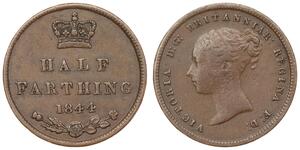(售价 $108.0)
840, France, Caroligian Empire, Louis "the Pious". Scarce Silver Denier Coin.
Denomination: Denier Mint Period: 814-840 AD Reference: Depeyrot 1179 var. Mint Place: Uncertain (possibly Orléans). Ruler: Louis 'le Pieux' (the Pious). As Emperor Louis I. Condition: MInor deposits, lightly deformed, otherwise VF+ Diameter: 19mm Weight: 1,22gm Material: Silver
Obverse: Cross-topped temple facade with a large cross inside. Legend: + X PISTIΛNΛ RELIGIO Reverse: Cross within inner circle. Single pellets in each quarter. Legend: +HLVDOVVICVS IMP
The Carolingian Empire (800–888) was a large Frankish-dominated empire in western and central Europe during the early Middle Ages. It was ruled by the Carolingian dynasty, which had ruled as kings of the Franks since 751 and as kings of the Lombards in Italy from 774. In 800, the Frankish king Charlemagne was crowned emperor in Rome by Pope Leo III in an effort to transfer the Roman Empire from east to west. The Carolingian Empire is considered the first phase in the history of the Holy Roman Empire, which lasted until 1806.
After a civil war (840–843) following the death of Emperor Louis the Pious, the empire was divided into autonomous kingdoms, with one king still recognised as emperor, but with little authority outside his own kingdom. The unity of the empire and the hereditary right of the Carolingians continued to be acknowledged. In 884, Charles the Fat reunited all the Carolingian kingdoms for the last time, but he died in 888 and the empire immediately split up. With the only remaining legitimate male of the dynasty a child, the nobility elected regional kings from outside the dynasty or, in the case of the eastern kingdom, an illegitimate Carolingian. The illegitimate line continued to rule in the east until 911, while in the western kingdom the legitimate Carolingian dynasty was restored in 898 and ruled until 987 with an interruption from 922 to 936.
The size of the empire at its inception was around 1,112,000 square kilometres (429,000 sq mi), with a population of between 10 and 20 million people. Its heartland was Francia, the land between the Loire and the Rhine, where its symbolic capital, Aachen, was located. In the south it crossed the Pyrenees and bordered the Emirate of Córdoba and, after 824, the Kingdom of Pamplona; to the north it bordered the kingdom of the Danes; to the west it had a short land border with Brittany, which was later reduced to a tributary; and to the east it had a long border with the Slavs and the Avars, who were eventually defeated and their land incorporated into the empire. In southern Italy, the Carolingians' claims to authority were disputed by the Byzantines (eastern Romans) and the vestiges of the Lombard kingdom in the Principality of Benevento.
The term "Carolingian Empire" is a modern convention and was not used by its contemporaries. The language of official acts in the empire was Latin. The empire was referred to variously as universum regnum ("the whole kingdom", as opposed to the regional kingdoms), Romanorum sive Francorum imperium[a] ("empire of the Romans and Franks"), Romanum imperium ("Roman empire"), or even imperium christianum ("Christian empire").
Louis the Pious (778 – 20 June 840), also called the Fair, and the Debonaire, was the King of the Franks and co-emperor with his father, Charlemagne, from 813. He was also King of Aquitaine from 781. As the only surviving son of Charlemagne and Hildegard, he became the sole ruler of the Franks after his father's death in 814, a position which he held until his death, save for the period 833–34, during which he was deposed.
During his reign in Aquitaine, Louis was charged with the defence of the empire's southwestern frontier. He conquered Barcelona from the Muslims in 801 and asserted Frankish authority over Pamplona and the Basques south of the Pyrenees in 812. As emperor he included his adult sons, Lothair, Pepin, and Louis, in the government and sought to establish a suitable division of the realm among them. The first decade of his reign was characterised by several tragedies and embarrassments, notably the brutal treatment of his nephew Bernard of Italy, for which Louis atoned in a public act of self-debasement.
In the 830s his empire was torn by civil war between his sons, only exacerbated by Louis's attempts to include his son Charles by his second wife in the succession plans. Though his reign ended on a high note, with order largely restored to his empire, it was followed by three years of civil war. Louis is generally compared unfavourably to his father, though the problems he faced were of a distinctly different sort.
1/2 Farthing 大不列颠及爱尔兰联合王国 (1801 - 1922) 青铜 维多利亚 (英国君主)
本组有 9 钱币 / 8 售价
⇑







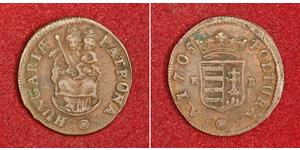

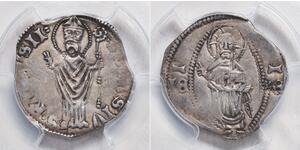




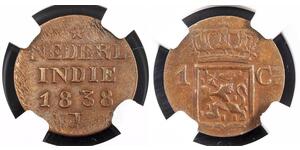
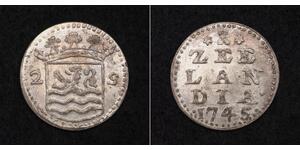
-300-150-YYnBwcI0woEAAAEnE4RaOLOG.jpg)
